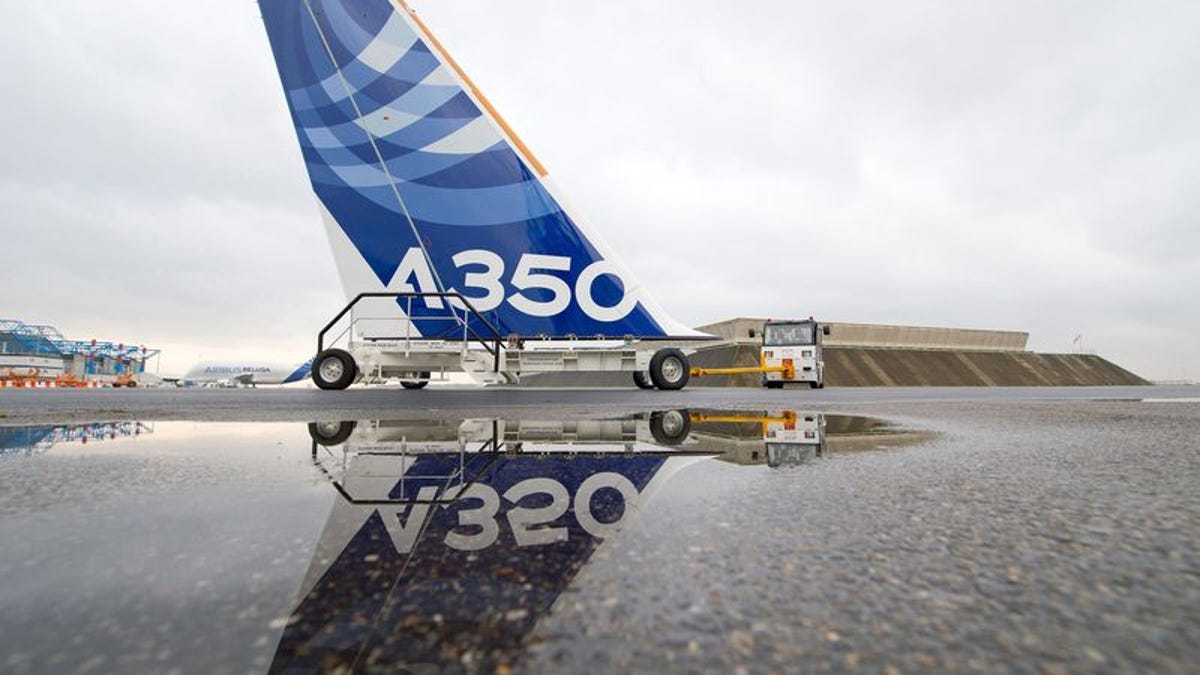Airbus A350 XWB to make first flight Friday
The inaugural flight of Airbus' highly fuel-efficient plane, made with a majority of composite materials, likely means an appearance at the Paris Air Show.

Airbus has confirmed that the A350 XWB will make its first flight Friday, a milestone that marks perhaps the last highly touted inaugural flight for years to come.
Over the last 10 years, aviation enthusiasts have been treated to a series of exciting first flights, from Airbus' A380 to Boeing's 787 Dreamliner and 747-8 Intercontinental. But with no other game-changing airplanes set to be launched in the next five years or more, the A350's first flight could be it for a while.
There has been significant speculation in recent weeks that the plane would take flight in time to make an appearance at the aviation industry's signature event, the Paris Air Show, which begins Monday. Airbus' announcement would seem to bolster such speculation.
The A350 XWB is Airbus' answer to three of arch-rival Boeing's planes, the troubled but popular 787 Dreamliner, and the 777 and 777-X. The new plane, which should take off from Airbus' headquarters in Blagnac, France, just outside the city of Toulouse, is said to be highly fuel-efficient, thanks in large part to its use of composite materials in 53 percent of the aircraft. It also utilizes titanium and advanced aluminum alloys, meaning that more than 70 percent of the entire airframe is constructed with what Airbus calls "advanced materials."
The A350 XWB's fuselage is built from carbon-fiber reinforced plastic composites, which should give the plane 25 percent better fuel efficiency, and be easier to maintain. Plus, it will better resist corrosion than traditional airplane bodies. Airbus boasts that its wings, at 105 feet long by 19.7 feet wide, are the largest-ever single aviation parts made from lightweight carbon composites.
Plus, in a bid to avoid the kind of battery issues that have plagued Boeing's Dreamliner, Airbus is using nickel-cadmium batteries rather than lithium-ion.
Three models
Airbus plans on building three versions of the A350 XWB. The first is the A350-900, which directly takes on Boeing's 777-200ER, and which replaces Airbus' own A330-300. The A350-900 will seat 314 passengers in a three-class layout and is powered by game-changing Trent XWB engines generating 84,000 pounds of thrust each. The plane has a range of 8,100 nautical miles.
Next up is the A350-800 XWB, which could be a direct competitor to Boeing's forthcoming 787-9 Dreamliner, the longer follow-up to its 787-8 Dreamliner. The A350-800 XWB will replace the A330-200. It has 270 seats in a three-class configuration, and flies with Rolls-Royce Trent XWB engines providing 74,000 pounds of thrust each. That plane has a range of 8,500 nautical miles.
Finally, Airbus will build the A350-1000 XWB, meant to take on the 777-300ER, and replace Airbus' own A340-600. That plane will seat 350 passengers in a three-class configuration, and uses the same engines as the A350-900. It can fly 8,400 nautical miles.
Friday's first A350 flight will be a big day for a program that was announced in 2006, and which began construction in 2009.

